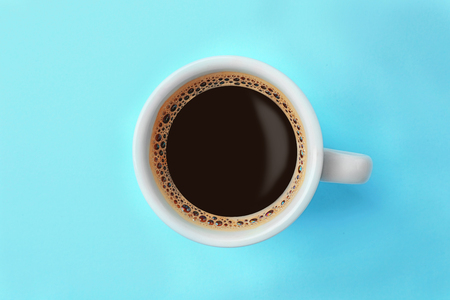1. Introduction: The Black Coffee Conversation
Step into any British café—whether it’s a bustling chain on the high street or an independent nook with jazz records spinning in the corner—and you’ll find black coffee quietly commanding respect. It’s more than just a morning jolt; it’s a canvas for contemplation, a ritual that draws out both city dwellers and countryside dreamers alike. Yet, for all its understated popularity, the black coffee order is often reduced to one word: “Americano.” But is that really the whole story? In Britain, where tea culture still lingers but coffee has found a fervent following, it’s time to look beyond the Americano and rediscover the nuanced world of black coffee. From the bold brevity of a short black to the lingering elegance of a lungo, there’s much to be said—and sipped—about how these variations shape our daily lives and preferences. Let’s step into this conversation, exploring how black coffee fits seamlessly into British café culture while also offering new perspectives for those willing to venture beyond the familiar.
2. Lungo and Short Black: Italian Roots, British Routes
If you wander through a sun-dappled piazza in Rome or Milan, the words “lungo” and “short black” aren’t just menu options—they are cultural cues, each one echoing with decades of ritual and espresso bar banter. The lungo—Italian for “long”—offers a more leisurely journey than its intense sibling, the short black (or as Italians call it, espresso). Traditionally, a lungo is made by running hot water through the same coffee grounds for longer than an espresso, resulting in a drink that’s gentler, less concentrated, yet still bracingly robust. The short black is all about brevity—a concentrated shot of pure coffee essence.
But as continental tastes drifted across the Channel, these distinctive styles had to find their place within Britain’s own evolving coffee culture. The British palate—once defined by the steady comfort of tea and milky instant coffee—now finds itself enchanted by the smoky mystery of espresso-based drinks. Yet, outside London’s more cosmopolitan corners, the terms “lungo” and “short black” remain quietly subversive; they appear on certain menus like secret passwords for those in the know.
Here’s a quick comparison of how these European styles differ and what they bring to British café tables:
| Coffee Style | Origin | Preparation | Taste Profile | Presence on British Menus |
|---|---|---|---|---|
| Lungo | Italy | Espresso with extra water (long extraction) | Smoother, less intense, slightly bitter | Increasing but still niche |
| Short Black (Espresso) | Italy/Australia/NZ (term) | Quick extraction, small volume | Intense, bold, aromatic | Common (usually as espresso) |
As these continental brews seep into British daily life, they invite a quiet reconsideration of what it means to enjoy black coffee. No longer simply functional fuel for dreary mornings, the lungo and short black offer new ways to pause, taste, and linger—even if only for a moment at your favourite high street café.

3. How the British Take Their Black
If you stroll through any British high street or duck into a neighbourhood café, you’ll notice that black coffee here wears a uniquely local accent. While the espresso and lungo are continental imports, the UK’s relationship with black coffee is filtered through centuries of tea rituals, a penchant for understatement, and a growing appetite for cosmopolitan tastes. In Britain, ordering “a black coffee” often means something different than in Rome or Melbourne; it might be an Americano—hot water added to espresso—or simply a filter brew, but always without milk. The language itself is telling: you’re more likely to hear “no milk, please” than the dramatic “short black” or “lungo.” Among regulars, there’s affection for terms like “a straight-up,” “just black,” or even the cheeky “builder’s brew” (though that one leans more tea than coffee). Coffee rituals here tend toward the unhurried: mugs rather than cups, conversation over commotion, and an unspoken pride in taking your coffee as it comes—no frills, no fuss. Where Italian baristas celebrate brevity and Antipodean cafés chase intensity, British drinkers carve out moments of calm amid drizzle and bustle. Perhaps what truly sets the UK apart is this quietly rebellious spirit: redefining black coffee not by its strength or preparation, but by how seamlessly it fits into daily life—a comforting constant on grey mornings, late trains, or after long walks along the Thames.
Coffeehouse Vernacular: From Flat White to Long Black
Step into any independent café or high-street chain in the UK, and you’ll find a menu that’s a patchwork of international coffee culture—each name echoing a different heritage, yet tweaked for British tastes. The lexicon of black coffee here is as much about identity as it is about caffeine. From the sturdy “Americano” to the Antipodean “Long Black,” and even the Italian-sounding “Lungo,” what’s poured into your cup often depends on who’s pulling the shots behind the counter—and where they learned their craft.
Britain’s coffee scene has always been a melting pot, but the last decade has seen an explosion of antipodean influence. Australian and New Zealand baristas brought with them a new vocabulary: “Flat White,” “Magic,” and “Long Black.” Suddenly, these drinks weren’t just Down Under oddities; they became signals of cosmopolitan cool in London’s East End or Manchester’s Northern Quarter. Yet, British cafes rarely import these terms wholesale—they adapt them, blending international style with local sensibility.
How Cafés Name and Serve Black Coffee
| Coffee Name | Origin | UK Interpretation |
|---|---|---|
| Lungo | Italy | A longer espresso, usually more diluted than a regular espresso but not as watered down as an Americano; can be confused with long black by some baristas. |
| Short Black | Australia/New Zealand | Rarely used term; closest equivalent would be a single espresso. If requested, staff might clarify your intent. |
| Long Black | Australia/New Zealand | An espresso poured over hot water—stronger and less diluted than an Americano; increasingly common in specialty cafés. |
| Americano | USA/Italy hybrid | Espresso topped up with hot water; standard black coffee order in most UK cafés. |
| Flat White (for reference) | Australia/New Zealand | A velvety microfoam milk coffee, now as British as rainy afternoons, though technically not black coffee. |
The Interplay of Influences: A Local Palate
This international jumble isn’t just about branding—it reflects how British drinkers interpret strength, bitterness, and ritual. While an Aussie might crave the intensity of a long black, many Brits prefer the lighter touch of an Americano. At the same time, there’s growing curiosity: young urbanites are more likely than ever to try an unfamiliar order just for the sake of novelty. In this way, every café becomes a small cultural crossroads—a place where ordering a black coffee is never quite as simple as it sounds.
The Power of Marketing: Naming Matters
Cafés are savvy: they know that calling something a “Long Black” or “Lungo” can make it seem more exotic, while sticking with “Americano” signals comfort and familiarity. Menus might even include playful descriptions (“A bolder take on your daily brew!”) to nudge customers toward adventure. Ultimately, what ends up in your cup is shaped by this ongoing dialogue between continents—a rich blend that makes British coffee culture uniquely its own.
5. New Waves, Old Habits: The Evolution of British Black Coffee
If you wander down the cobbled streets of Shoreditch or find yourself tucked away in a Glasgow alleyway, you’ll notice a quiet revolution brewing—one cup at a time. Independent roasteries have begun to reshape how Britons perceive their daily black coffee. Where once a “cuppa” meant tea, and coffee was often synonymous with a milky flat white, today’s urban explorers are seeking out the nuanced depths of espresso, lungo, and short black.
Third-wave coffee shops—those havens of exposed brick and reclaimed wood—have become temples to single-origin beans and meticulously pulled shots. Here, baristas speak of flavour notes and extraction times with the reverence once reserved for sommeliers. Suddenly, a short black is not just an Italian import but a canvas for British curiosity: less about tradition, more about taste and experience.
This shift is not simply about adopting continental habits; it’s about reimagining them through a distinctly British lens. The lingering ritual of sipping an Americano by the Thames, the quiet pride in discovering an independent roastery in Bristol, or the simple pleasure of sharing tasting notes with friends—these moments stitch together old sensibilities with new attitudes.
Cultural curiosity plays its part as well. Global travel and Netflix docuseries have sparked an appetite for authenticity and adventure. Britons are now keen to ask: Is that lungo roasted locally? What’s the provenance of this Ethiopian bean? The conversation has moved beyond caffeine—it’s about provenance, process, and personal connection.
And so, while some old habits die hard—the biscuit on the side, perhaps, or the morning rush—a new wave pulses beneath. Black coffee in Britain is being gently redefined: it is at once familiar and daringly modern, shaped by both nostalgia and novelty. As these trends percolate through city centres and market towns alike, one thing becomes clear: the British relationship with black coffee is evolving, one thoughtful sip at a time.
6. Conclusion: Redefining the Black in Britain
In the gentle hum of Britain’s coffee shops—where tradition sits comfortably beside innovation—the black coffee is quietly experiencing a renaissance. What was once a straightforward affair, a no-nonsense cup drawn from the pot or pumped from a filter machine, has been transformed by continental influence and the creative spark of a new generation of baristas. From the long, contemplative pour of a Lungo to the punchy immediacy of a Short Black, these variations have threaded themselves into the British palate, inviting us to reconsider what it means to order a “black” in the UK.
As we reflect on this evolving ritual, it becomes clear that Britain’s approach to black coffee is neither strictly Italian nor purely Antipodean; rather, it is uniquely local—a blend of respect for history with an open-minded embrace of novelty. The British café scene, ever adaptive, now offers space for those who seek nuance and clarity in their cup, as well as those who crave the familiar comfort of a builder’s brew.
This quiet reimagining isn’t about replacing tradition but expanding it. Each shot pulled, each cup poured, carries with it echoes of distant cultures and local quirks—proof that black coffee here is less about rigid definition and more about personal interpretation. It’s in these small moments—a barista recommending a Lungo to a curious regular, or friends debating the merits of a Short Black over an Americano—that British black coffee culture finds its voice.
So next time you step into your favourite neighbourhood café or stumble upon an indie spot tucked down a cobbled lane, consider ordering your black coffee with a sense of adventure. In Britain today, “just a black coffee” could mean so much more than you expect—a subtle expression of both heritage and experimentation, served up with that distinctively understated British charm.


